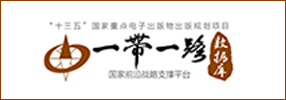
社会科学文献出版社 2013-06出版
占领时期美国对日文化改革与民主输出

先晓推荐
相关海报
详情
展开
and controlled by the United States.In order to insure that Japan would never again
threaten the peace and security of the world and that a peaceful and
responsible government would be established in Japan in due course, the
American occupation authorities not only destroyed Japan’s war
capabilities and eradicated militarists and ultra-nationalists’ influences, but embarked on a full-scale reform of
Japan’s
political system, economy, society, and culture. During the occupation period,
the General Headquarters of the Supreme Commander for the Allied Powers
(GHQ/SCAP) formulated and implemented the American policies toward Japan, and
those in the area of culture were prepared and carried out by GHQ’s Civil
Information and Education Section (CIE). Primarily drawing on the GHQ/SCAP
Records, this book examines the formulation, implementation, and influence of
the U.S. cultural
policies toward Japan during the occupation period.
In contrast to political and economic reforms
which tend to emphasize building institutions, cultural reforms directly affect
people’s
life styles, behavioral norms, thoughts and values and, therefore, play an
unparalleled role in the process of democratic nation-building. Since the Japanese had long viewed
themselves as imperial subjects, it was imperative to reform the old Japanese
culture and replace it with the soil of civic culture if the new democratic
institutions, introduced as a result of the political and economic reforms,
were to take roots in Japan. During the occupation period, the Civil
Information and Education Section not only implemented democratic reforms in
the areas of press, radio, motion pictures, education and religion according to
the U.S. historical
experience. It also sought to introduce a liberal and democratic culture into
Japan’s
society to re-orientate and re-educate Japanese people. This book explores CIE’s cultural
reforms as a whole. It does not examine the establishment and development of
various specific cultural institutions in postwar Japan under the guidance of
CIE. Instead, it focuses on the ways in which CIE employed those cultural means
in order to exert influence on the mentalities, sentiments, and opinions of the
Japanese.
Drawing on concepts and theories of political
culture and civic culture in the field of political sciences, the author
examines CIE’s activities from the angle of the transition of
Japan’s
political culture after World War II. This book views CIE’s activities as
a process of exporting America’s democratic political culture, i.e. civic culture;
it analyzes the relationship between CIE’s activities and the nurturing of civic culture in
postwar Japan. Such an analysis helps to elucidate the role of the U.S. cultural
policies toward Japan during the occupation period in the process of postwar
Japan’s
democratization.
This book draws the following conclusions: CIE’s activities
helped nurture the Japanese people’s independent and sound personalities, fostered
their concept of human rights, and raised the level of their understanding and
abilities of political participation. Through the cultural reforms during the
occupation period, the Japanese people underwent a significant transformation,
psychologically, from imperial subjects to citizens. In other words, by way of
the American exportation and the Japanese nurture, the democratic culture took
roots in Japan and became Japan’s own civic culture in the modern sense,
buttressing Japanese democratic institutions from within.
Key Words: the American Occupation of Japan, the Civil
Information and Education Section, Cultural Reform, Civic Culture,
Democratization
展开
内容资源
|
绪 论 |
1 |
|
一 中美日学术界关于美国对日占领史的研究状况 |
3 |
|
二 本书所要解决的问题、研究视角与方法 |
26 |
|
三 各章内容介绍 |
32 |
|
四 文献说明 |
34 |
|
第一章 战时美国对日研究与战后对日构想的确立 |
36 |
|
第一节 国民性研究的兴起与人类学家对日本人的认识 |
37 |
|
第二节 地区研究的兴起与日本研究专家对日本社会的观察 |
50 |
|
第三节 国务院战后对日构想的提出 |
60 |
|
第二章 战后美国对日文化政策的制定与民间信息教育局的成立 |
76 |
|
第一节 战后美国对日占领政策的确立 |
76 |
|
第二节 战后美国对日管理体制的形成 |
85 |
|
第三节 民间信息教育局与文化上的再定位政策 |
91 |
|
第三章 媒体改革:实现公共信息与表达自由 |
101 |
|
第一节 新闻出版 |
105 |
|
第二节 无线电广播 |
127 |
|
第三节 电影 |
148 |
|
第四章 教育改革:培养民主社会合格公民 |
171 |
|
第一节 非军事化与民主化的基本教育政策 |
173 |
|
第二节 美国教育使节团访日 |
182 |
|
第三节 民主主义教育改革的全面展开 |
197 |
|
第五章 宗教改革:确立公民宗教信仰自由 |
223 |
|
第一节 信仰自由的基本宗教政策 |
225 |
|
第二节 天皇神性的否定与国家神道的解体 |
233 |
|
第三节 战后日本宗教的新发展 |
243 |
|
结 语 |
253 |
|
参考文献 |
269 |
|
索 引 |
287 |
|
后 记 |
292 |
手机扫码阅读
相关知识库
请选择图书

- 1.0
- 1.5
- 2.0
- 3.0






